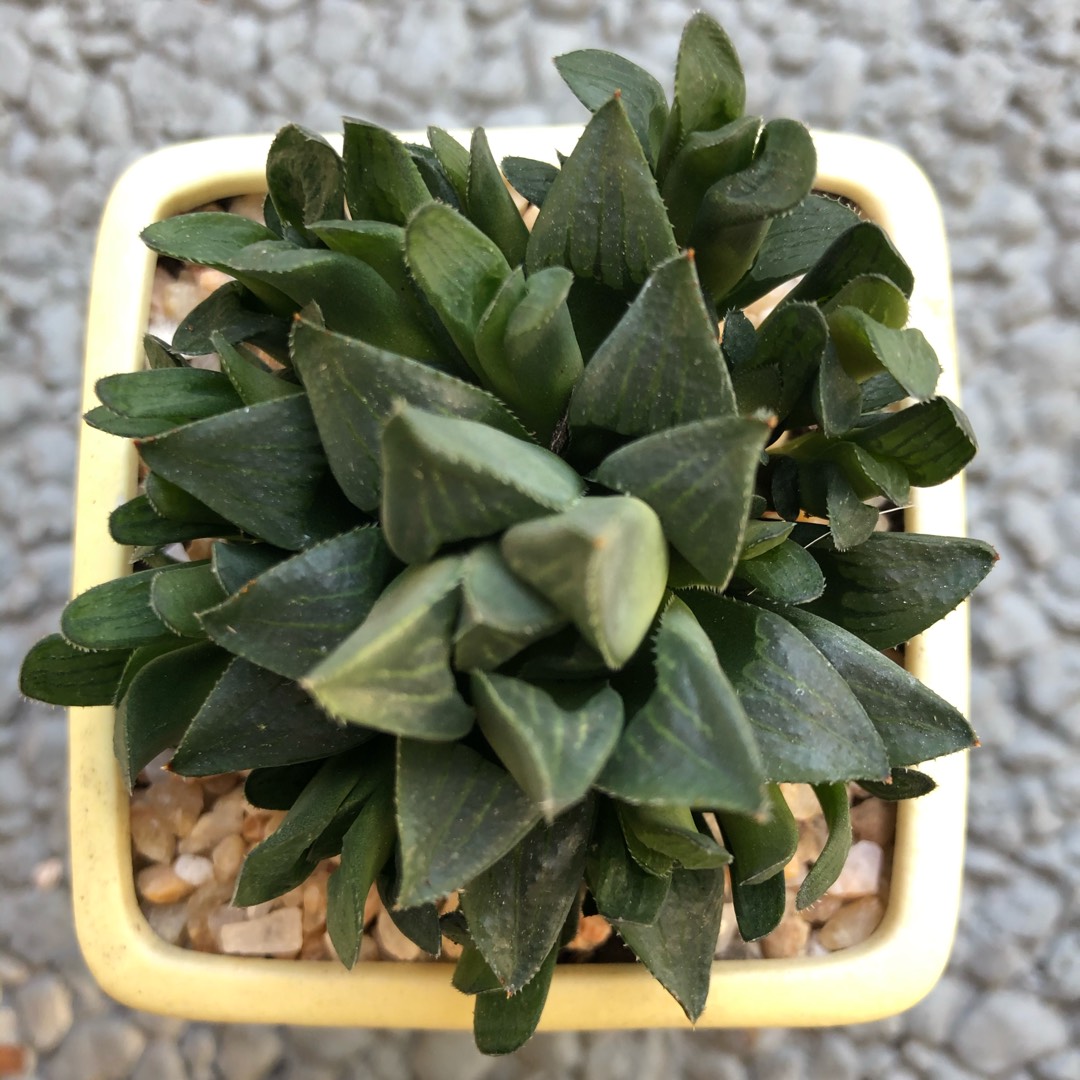
Haworthia magnifica
Haworthia magnifica
Haworthia magnifica is a succulent evergreenslow-growing species. Haworthia in genenal are small (usually remaining between 3 inches (7.5 cm) and 5 (12.5 cm) inches in height) and relatively slow-growing. They are often grown in small clusters in wide, shallow dishes. Over time, clusters will naturally enlarge as the mother plant sends off small plantlets. When the cluster has outgrown its dish, repot in the spring or early summer into a new wide and shallow dish with fresh potting soil. Its shape and brownish-greenish color serve to camouflage this plant on the ground. It is usually a solitary stemless plant. The leaves are approximately triangular, about 3,5 cm long, with longitudinal pale brown or greyish veines along the upper surfaces and small teeth along the edges. The leaves form a rosette of about 8 cm in diameter. Flowers are white and small, forming an inflorescence of about 40 cm. This highly variable species is one of the "retuse" species of Haworthia, meaning that it usually grows sunken beneath the ground with its flattened leaves only showing on the surface. Its rosette of succulent leaves are turned back ("retuse") so as to provide a flat and level face, on the surface of the ground. In this form, it is similar to other retuse haworthias.
Contributed by @Muzz67
-
Partial shade
-
Very little water
-
Frost Hardy: 23F (-5°C)
-
Free draining
Common name
Haworthia magnifica
Latin name
Haworthia magnifica
type
Succulent
family
Asphodelaceae
ph
5.0 - 7.0 Acid - Neutral
Plant & bloom calendar
-
Best time to plant
-
When the plant will bloom
full grown dimensions
 0.30 M
0.20 M
0.30 M
0.20 M
Haworthia magnifica
Haworthia magnifica is a succulent evergreenslow-growing species. Haworthia in genenal are small (usually remaining between 3 inches (7.5 cm) and 5 (12.5 cm) inches in height) and relatively slow-growing. They are often grown in small clusters in wide, shallow dishes. Over time, clusters will naturally enlarge as the mother plant sends off small plantlets. When the cluster has outgrown its dish, repot in the spring or early summer into a new wide and shallow dish with fresh potting soil. Its shape and brownish-greenish color serve to camouflage this plant on the ground. It is usually a solitary stemless plant. The leaves are approximately triangular, about 3,5 cm long, with longitudinal pale brown or greyish veines along the upper surfaces and small teeth along the edges. The leaves form a rosette of about 8 cm in diameter. Flowers are white and small, forming an inflorescence of about 40 cm. This highly variable species is one of the "retuse" species of Haworthia, meaning that it usually grows sunken beneath the ground with its flattened leaves only showing on the surface. Its rosette of succulent leaves are turned back ("retuse") so as to provide a flat and level face, on the surface of the ground. In this form, it is similar to other retuse haworthias.
Flowering Season
From Mid Summer TO Mid Summer
Haworthia and Haworthiopsis will produce flowers, usually a few weeks after the "longest day" of the year, i.e. in Summer. However the flowers aren't very exciting, although because Haworthia and Haworthiopsis are very slow and compact plant not much happens visually during the year therefore the flowering period can be a welcome treat to show that your plant is actually "alive".
Planting Young Plants
From Early Spring TO Early Spring
When you re-pot your Haworthia or Haworthiopsis you can separate the offsets from the parent. Use a sharp knife and cut as close to the parent plant as possible, ensure the offset has some roots. Wait a day for the offset to dry slightly then pot up in a small container using a standard potting or cactus compost mix. Water and keep warm.













